3.1 General history of lighthouses in Australia
The first lighthouse to be constructed along Australian soil was Macquarie Lighthouse, located at the entrance to Port Jackson, NSW. First lit in 1818, the cost of the lighthouse was recovered through the introduction of a levy on shipping. This was instigated by Governor Lachlan Macquarie, who ordered and named the light.
The following century oversaw the construction of hundreds of lighthouses around the country. Constructing and maintaining a lighthouse were costly ventures that often required the financial support of multiple colonies. However, they were deemed necessary aids in assisting the safety of mariners at sea. Lighthouses were firstly managed by the colony they lay within, with each colony developing their own style of lighthouse and operational system. Following Federation in 1901, which saw the various colonies unite under one Commonwealth government, lighthouse management was transferred from state hands to the Commonwealth Lighthouse Service.
Lamps and optics: an overview
Lighthouse technology has altered drastically over the centuries. Eighteenth century lighthouses were lit using parabolic mirrors and oil lamps. Documentation of early examples of parabolic mirrors in the United Kingdom, circa 1760, were documented as consisting of wood and lined with pieces of looking glass or plates of tin. As described by Searle, ’When light hits a shiny surface, it is reflected at an angle equal to that at which it hit. With a light source is placed in the focal point of a parabolic reflector, the light rays are reflected parallel to one another, producing a concentrated beam’.8
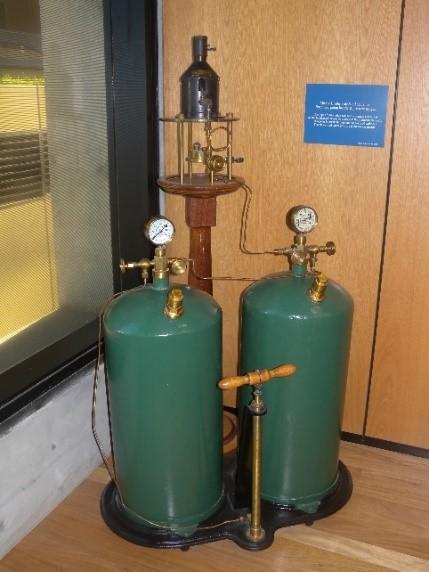 Figure 9. Incandescent oil vapour lamp by Chance Brothers (Source: AMSA)
Figure 9. Incandescent oil vapour lamp by Chance Brothers (Source: AMSA)
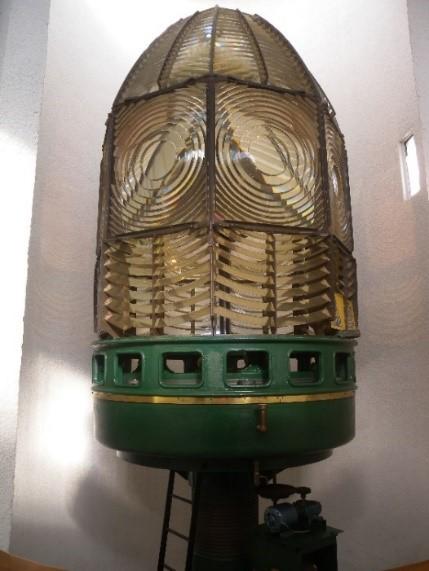 Figure 10. Dioptric lens on display at Narooma (Source: AMSA)
Figure 10. Dioptric lens on display at Narooma (Source: AMSA)
In 1822, Augustin Fresnel invented the dioptric glass lens. By crafting concentric annular rings with a convex lens, Fresnel had discovered a method of reducing the amount of light absorbed by a lens. The Dioptric System was adopted quickly with Cordouran Lighthouse (France), which was fitted with the first dioptric lens in 1823. The majority of heritage-listed lighthouses in Australia house dioptric lenses made by others such as Chance Brothers (United Kingdom), Henry-LePaute (France), Barbier, Bernard & Turenne (BBT, France) and Svenska Aktiebolaget Gasaccumulator (AGA of Sweden). These lenses were made in a range of standard sizes, called orders—see ‘Appendix 2. Glossary of lighthouse Terms relevant to Cape Sorell Lighthouse’.
Early Australian lighthouses were originally fuelled by whale oil and burned in Argand lamps, and multiple wicks were required in order to create a large flame that could be observed from sea. By the 1850s, whale oil had been replaced by colza oil, which was in turn replaced by kerosene, a mineral oil.
In 1900, incandescent burners were introduced. This saw the burning of fuel inside an incandescent mantle, which produced a brighter light with less fuel within a smaller volume. Light keepers were required to maintain pressure to the burner by manually pumping a handle as can be seen in Figure 9.
In 1912, Swedish engineer Gustaf Dalén, was awarded the Nobel Prize in physics for a series of inventions relating to acetylene-powered navigation lights. Dalén’s system included the sun valve, the mixer, the flasher, and the cylinder containing compressed acetylene. Due to their efficiency and reliability, Dalén’s inventions led to the gradual destaffing of lighthouses. Acetylene was quickly adopted by the Commonwealth Lighthouse Service from 1915 onwards.
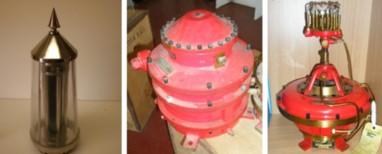 Figure 11. Dalén's system - sunvalve, mixer and flasher (Source: AMSA)
Figure 11. Dalén's system - sunvalve, mixer and flasher (Source: AMSA)
Large dioptric lenses, such as that shown in Figure 10, gradually decreased in popularity due to cost and the move towards unmanned automatic lighthouses. By the early 1900s, Australia had stopped ordering these lenses with the last installed at Eclipse Island in Western Australia in 1927. Smaller Fresnel lenses continued to be produced and installed until the 1970s when plastic lanterns, still utilising Fresnel’s technology, were favoured instead. Acetylene remained in use until it was finally phased out in the 1990s.
In the current day, Australian lighthouses are lit and extinguished automatically using mains power, diesel generators, and solar-voltaic systems.
3.2 The Commonwealth Lighthouse Service
When the Australian colonies federated in 1901, they decided that the new Commonwealth government would be responsible for coastal lighthouses—that is, major lights used by vessels travelling from port to port—but not the minor lights used for navigation within harbours and rivers. There was a delay before this new arrangement came into effect. Existing lights continued to be operated by the states.
Since 1915, various Commonwealth departments have managed lighthouses. AMSA, established under the Australian Maritime Safety Authority Act 1990 (Cth), is now responsible for operating Commonwealth lighthouses and other aids to navigation, along with its other functions.
3.3 Tasmanian Lighthouse Service
The table below details the various authorities responsible for Tasmanian lighthouse management from 1915 to present.
| Time Period | Administration |
| 1915–1927: | Lighthouse District No. 3 (Victoria, New South Wales, Tasmania), Hobart Headquarters. |
| 1927–1963: | Deputy Director of Lighthouses and Navigation, Tasmania. |
| 1963–1972: | Department of Shipping and Transport, Regional Controller, Tasmania. |
| 1972–1982: | Department of Transport , Regional Controller, Tasmania. |
| 1982–1983: | Department of Transport and Construction. Victoria–Tasmania Region, Transport Division (Tasmania) |
| 1983–1985 | Department of Transport Victoria–Tasmania Region, Hobart Office. |
| 1985–1987: | Department of Transport Tasmanian Region. |
| 1987–1990: | Department of Transport and Communications, Tasmanian Region. |
| 1991– | Australian Maritime Safety Authority. |
3.4 Cape Sorell: a history
Aboriginal history
Further consultation with Traditional Stakeholders is required for insight on the history of the region.
Early European history
Cape Sorell was named after William Sorell, Lieutenant-Governor of Tasmania (1817–1824). Sorell was renowned in the Macquarie Harbour region along the west coast of Tasmania.
Owing to its isolated position, very little European contact with the region was made early on. Macquarie Harbour, however, was recorded by European expeditions in 1815 and was later established as a penal station in 1822. Ships bringing in convicts and supplies bound for the penal station would round Cape Sorell in order to enter the harbour. The port of Strahan was established following the closure of the penal station and remained a major port of call for the timber industry until the establishment of a railway line.9
3.5 Planning a lighthouse
Why Cape Sorell?
Cape Sorell sits as the outermost boundary of the nearby Macquarie Harbour. Its position served as a critical orientation point for shipping entering and exiting the harbour and its associated ports. Nautical merchants trading along the west Tasmanian coast strongly advocated for the construction of a light in order to assist the safe passage of goods and crew.10 Due to the Cape’s extended position and the harbour’s hidden location, Cape Sorell was a prime location for a lighthouse as it could assist ships navigating both the coastline and the entrance to the harbour.
The site chosen was approximately half a mile inland on quartzite rock and approximately 1,400 acres in size. Another site had been considered on the cape, further inland and higher in elevation. However it was decided constructing a lighthouse so far from the sea ‘would impair the efficiency’.11
Design
Blueprints for a lighthouse were prepared by the Hobart Marine Board’s architects, Huckson and Hutcheson. On 11 March 1898, these plans were submitted by the Minister for Lands and Works and were swiftly approved by the Executive Council.12
The designs depicted a 40-meter tall lighthouse tower constructed of brick, accompanied by keepers’ quarters for a master and assistant masters.13 The estimated cost was £6243 for the building and £2307 for the lantern and light. On 9 May 1898, The Mercury reported Chance Bros. & Co. Birmingham had been contacted and were to provide a light suitable for Cape Sorell.14
Construction
Following finalisation of the design, tenders were called and the construction of Cape Sorell Lighthouse was awarded to the Duff Bros. and their tender of £5580.15 The project’s progress was reported in the Zeehan and Dundas Herald:
Mr R. Duff, of Duff Bros., Hobart, contractors for the building of the lighthouse at Cape Sorell, arrived on Zeehan yesterday. The lighthouse is situated some two miles from Macquarie entrance, and is so located that it will prove a convenience to vessels trading either from the North or South. The tower, when completed, will be 100ft high from the foundation, which is of cement built on the solid reef. Nearly 400,000 bricks will be used in the building of the tower, made at Messers Duff Bros. works, New Town. At the base the lighthouse measures 40ft, and is cemented for 30ft. The light will show for a distance of 20 miles. and will be over 200ft above water level. Two brick five-roomed cottages have been built for assistants, and an either-roomed brick residence is now in course of construction for the head keeper. The tower is completed for 70ft, and the contractors expect to finish the work some time next month.16
A wooden tramway was laid down from Pilot Bay to the construction site, approximately 1.5 miles (2.4 km) apart, upon which building materials were transferred to and from the site.17 On 28 February 1899, the Tasmanian News reported that the R.M.S. Papanui, which was carrying Cape Sorell’s lamp, had arrived from London and its installation was to be instantaneous.18
Construction was completed in May 1899 and an opening ceremony was held on 2 October the same year. This ceremony was performed by Captain J. W. Evans, M.H.A., Master Warden of the Hobart Marine Board. The ceremonial party also consisted of Strahan and Hobart Marine Board members.19
Equipment when built
Upon completion, the Cape Sorell Lighthouse stood as a 40-metre brick structure, fitted with a Chance Bros & Co. 2nd Order dioptric light, which was fuelled by vaporised kerosene and composed of alternating white and red flashes every 22.5 seconds. In good weather the visibility of the white flash, with an intensity of 208,000 candlepower, allegedly reached 20 miles (32km). The red flash, with an intensity of 83,000 candlepower, reached 12 miles (19km) in distance. The light originally rotated by weights, pulleys and ropes. The lamp installed was regarded as a ‘Piston Pressure Lamp’ which fed a four-wick Trinity burner.20
The tower was accompanied by an engine room, three cottages for the assistant keepers and Superintendent stationed at the light.21 Cape Sorell was the last lighthouse to be built by the Tasmanian Government before Commonwealth authorities assumed responsibility for coastal lights in 1915.
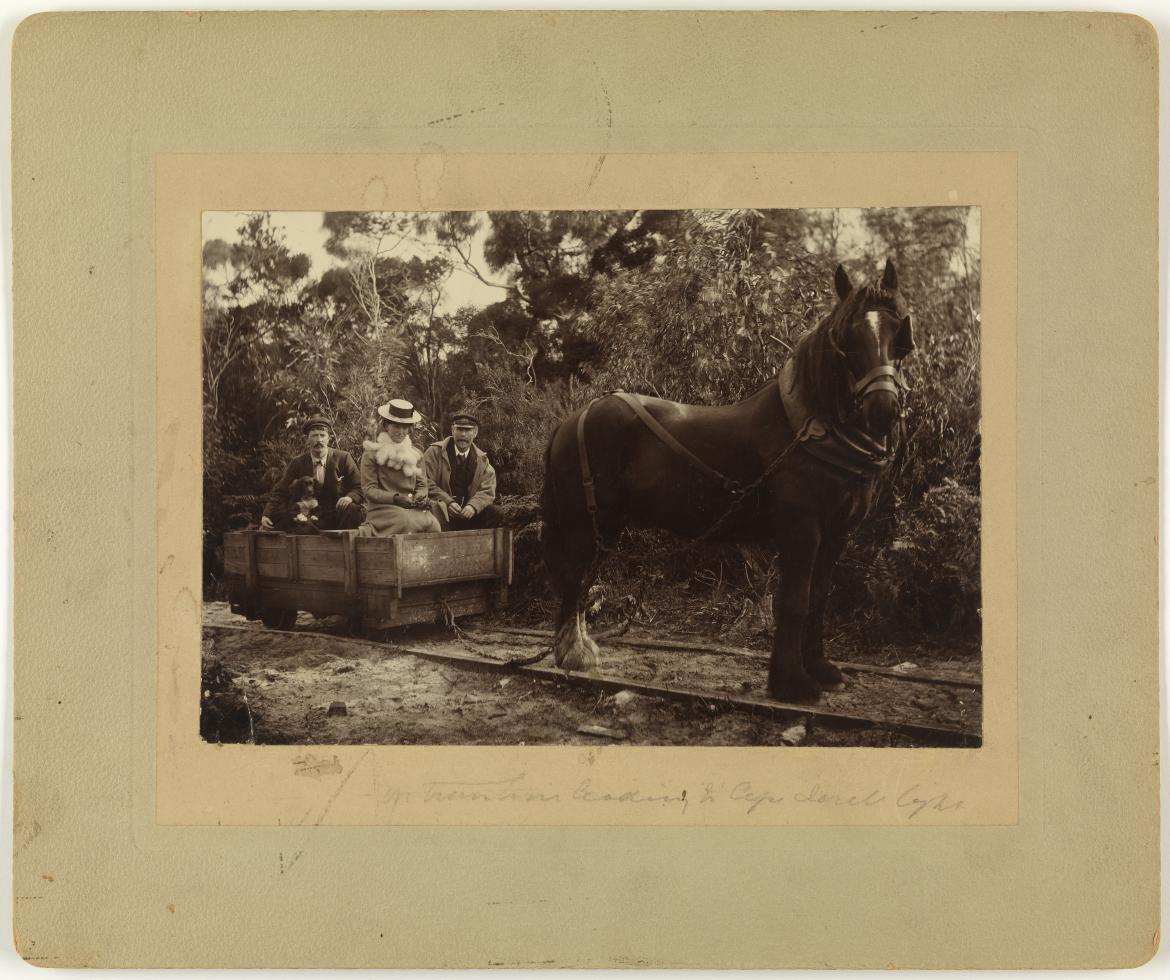 Figure 12. Tramline leading to Cape Sorell Light c. 1900 (Digitised item from: W.L. Crowther Library, Tasmanian Archive and Heritage Office)
Figure 12. Tramline leading to Cape Sorell Light c. 1900 (Digitised item from: W.L. Crowther Library, Tasmanian Archive and Heritage Office)
3.6 Lighthouse keeping
Cape Sorell Lighthouse was originally attended by William Jacques and his assistants Carlson and Light. The keepers were required to tend to the light in shifts and maintain the cottages, tower and engine room. A supply vessel would visit each week to replenish the lighthouse’s stores, and maintenance technicians could access the site via horse-drawn truck along the wooden rails leading to the lighthouse from Pilot Beach.
A total of three keepers remained stationed on site until 1962 when the lighthouse was converted to diesel-electric operation and the number of keepers reduced. In 1971, the lighthouse was converted to automatic operation. The remaining keepers were withdrawn and the keepers’ cottages demolished.
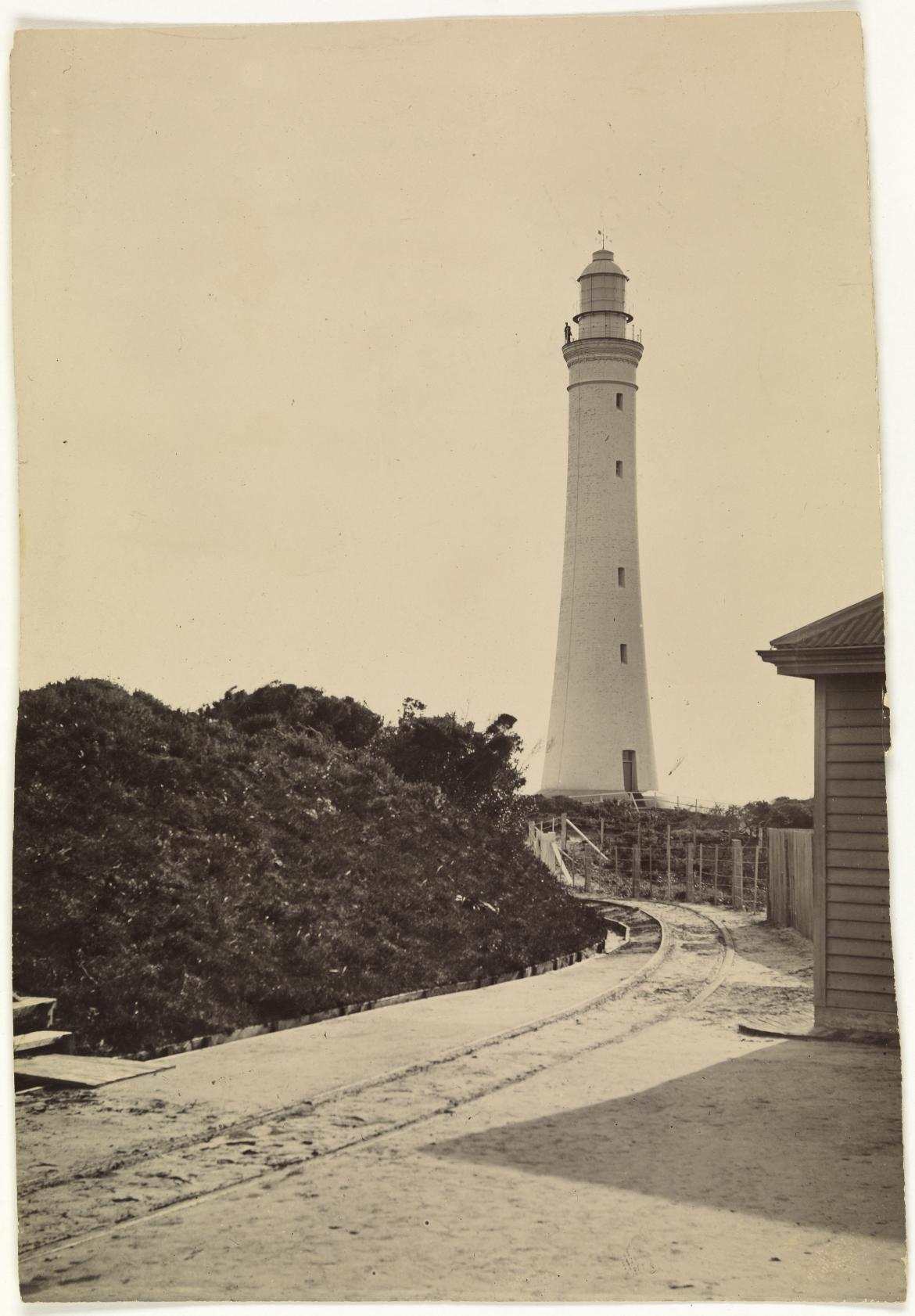 Figure 13. Sorell Light, Macquarie Harbour c. 1910 (Digitised item from: W.L. Crowther Library, Tasmanian Archive and Heritage Office)
Figure 13. Sorell Light, Macquarie Harbour c. 1910 (Digitised item from: W.L. Crowther Library, Tasmanian Archive and Heritage Office)
3.7 Chronology of major events
The following table details key events to have occurred at Cape Sorell Lighthouse over the course of its history.
| Date | Event Details |
| May 1899 | Construction of Cape Sorell Lighthouse completed |
| 2 October 1899 | Cape Sorell Lighthouse officially opened.22 |
| 5 September 1912 | Lighthouse struck by lightning—tower left relatively undamaged.23 |
| 1971 | Lighthouse de-staffed. Keepers’ residences demolished. |
3.8 Changes and conservation over time
The Cape Sorell Lighthouse underwent a number of changes over the decades since its construction—most significantly the conversion of the main light to solar power in the 1980s.
The Brewis Report
Commander CRW Brewis, retired naval surveyor, was commissioned in 1911 by the Commonwealth Government to report on the condition of existing lights and to recommend any additional ones. Brewis visited every lighthouse in Australia between June and December 1912, and produced a series of reports published in their final form in March 1913. These reports were the basis for future decisions made for the management of individual lighthouses.
Recommendations made by Brewis for Cape Sorell Lighthouse included alteration of the light’s character, an increase to the light’s intensity, and the installation of a 55mm incandescent mantle and telephone communications.24
CAPE SORELL LIGHT. (78 miles from West Point.) Lat. 42º 11’ S., Long. 145º 10’ E., Chart No. 1079.- Established in the year 1899. Lloyd’s Signal Station. Not connected by telephone. Character.- One flashing white and red alternately every 22 ½ seconds. Dioptric, 2nd Order.- White, 20,000 c.p.; red, 5,000 c.p. White, visible, in clear weather, 20 nautical miles; red, 12 miles. Brick tower, 100 feet. Height of focal plane, 186 feet above high water. Condition and State of Efficiency.- The light-house tower, and apparatus are in good condition. The red flash in the light impairs its brilliancy. Red being the colour of danger, uniformity would be secured if the alternate red flash were discontinued. The dwellings are in fair order, with the exception that the roofs and spouting are in need of repair. The wooden tramway also requires extensive renewals. Communication.- The Pilot Station at Macquarie Heads is connected with Strahan by telephone. The distance from the heads to Cape Sorell by beach and tramway is about 3 miles, and in a direct line about 2.4 miles. No proposal has been considered for connecting Cape Sorell by telephone, but there are no difficulties in the way. At present messages of an urgent nature are telephoned to the heads, and conveyed to Cape Sorell by messenger. RECOMMENDED.-
|
Alteration to the light
The following table details alterations made to the light at Cape Sorell over the course of the lighthouse’s history.
| Date | Alteration |
| 1935 | Converted to diesel-electric operation. |
| 1971 | Converted to automated operation. |
| 1988 | Converted to solar power. Modular solar racks were mounted on balcony. |
| 2019 | Vega VRB25 beacon installed with 12V 35W C8 Halogen LP PR30s lightsource. |
Recent conservation works
The following table details conservation works to have been carried out at Cape Sorell Lighthouse over recent years.
| Date | Works Completed |
| 2001 | Corrective maintenance including:
|
| 2016 | Major repainting of:
|
3.9 Summary of current and former uses
From its construction in 1899, Cape Sorell Lighthouse has been used as a marine AtoN for mariners at sea. Its AtoN capability remains its primary use.
3.10 Summary of past and present community associations
Aboriginal associations
Further consultation with traditional stakeholders is required for a greater understanding of the past and present associations held across the region.
The Department of Primary Industries, Parks, Water and Environment (Aboriginal Heritage Tasmania) advised there are a number of Aboriginal heritage sites recorded nearby the lighthouse.
Local, national and international associations
The manned history of the lighthouse has resulted in familial associations with the place locally, nationally and internationally. Cape Sorell is considered a significant site of Tasmanian maritime history.
3.11 Unresolved questions or historical conflicts
Any historical conflicts or unresolved questions brought to light will be addressed here in future versions of this plan.
3.12 Recommendations for further research
Research on past lighthouse keepers of Cape Sorell Lighthouse may be beneficial in determining the full extent of the social value placed on the site within the surrounding communities.
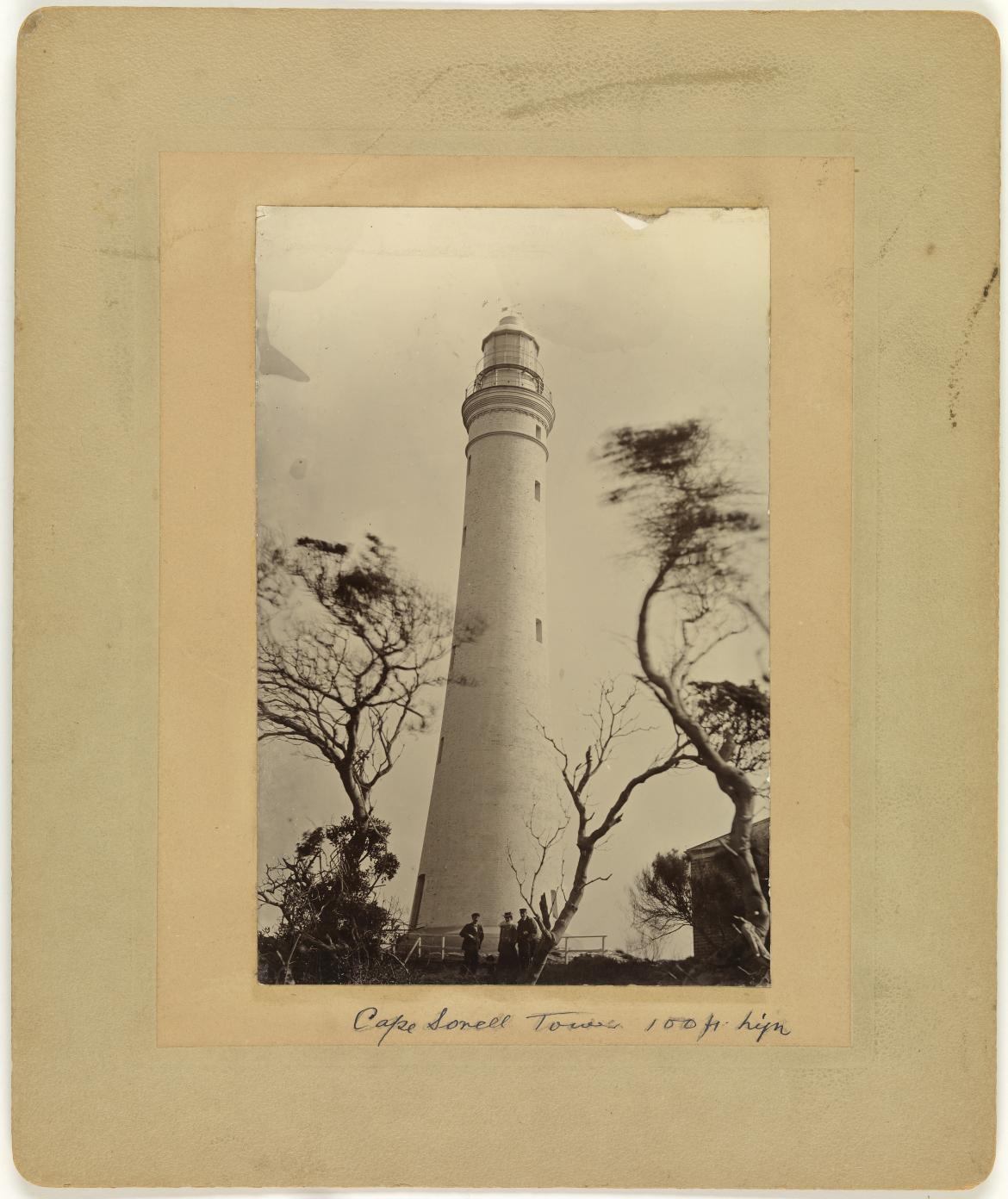 Figure 14. Cape Sorell tower c. 1900 (Digitised item from: W.L. Crowther Library, Tasmanian Archive and Heritage Office)
Figure 14. Cape Sorell tower c. 1900 (Digitised item from: W.L. Crowther Library, Tasmanian Archive and Heritage Office)
__________________________________________________________________________________________________________
Footnotes
![]() 8 Garry Searle, First Order: Australia’s Highway of Lighthouses, (SA: Seaside Lights, 2013), 34.
8 Garry Searle, First Order: Australia’s Highway of Lighthouses, (SA: Seaside Lights, 2013), 34.
9 Stanley, K., Guiding Lights: Tasmania’s lighthouses and lighthouse men, (St. David’s Publishing: Hobart), 1991, pg. 138
11 ‘Cape Sorell Lighthouse’, The Mercury, May 9, 1898; ‘Cape Sorell Lighthouse’, Launceston Examiner, Feb 23, 1898; ‘Cape Sorell Lighthouse’, Launceston Examiner, May 10, 1898
![]() 19 ‘Cape Sorell Lighthouse’, Launceston Examiner, October 2, 1899; ‘Cape Sorell Lighthouse,’ Launceston Examiner, October 4, 1899
19 ‘Cape Sorell Lighthouse’, Launceston Examiner, October 2, 1899; ‘Cape Sorell Lighthouse,’ Launceston Examiner, October 4, 1899
![]() 24 Brewis. C.R.W., Preliminary report on the lighting of the coast of Tasmania and the Islands in Bass Strait with recommendations as to existing lights and additional lights, Department of Trade and Customs (1912), pg. 16
24 Brewis. C.R.W., Preliminary report on the lighting of the coast of Tasmania and the Islands in Bass Strait with recommendations as to existing lights and additional lights, Department of Trade and Customs (1912), pg. 16